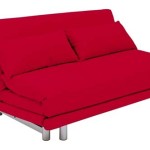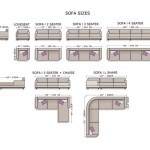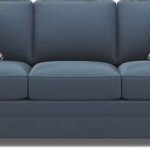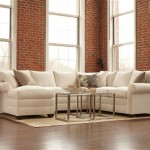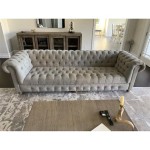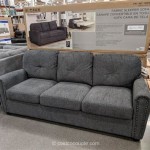Innovative Bed Into Sofa Ideas for Space-Saving Multipurpose Furniture
In contemporary living spaces, maximizing functionality and optimizing space are paramount. Multipurpose furniture plays a crucial role in achieving these goals, and the bed-into-sofa design represents a prominent solution. These convertible pieces offer the comfort of a bed and the functionality of a sofa, making them ideal for small apartments, guest rooms, home offices, and other areas where versatility is desired. The diverse range of mechanisms, styles, and integrated features available cater to various needs and aesthetic preferences.
The evolution of bed-into-sofa designs reflects an increasing demand for adaptable furniture that seamlessly integrates into modern lifestyles. Early iterations often prioritized practicality over aesthetics, focusing primarily on the mechanical aspect of transformation. However, contemporary models emphasize both form and function, incorporating stylish designs, comfortable upholstery, and user-friendly conversion mechanisms. This fusion of design elements allows these pieces to serve as both functional furniture and focal points within a room.
Bed frames designed to transform into sofas are not confined to a single type. They encompass diverse designs, construction materials and operational mechanisms. It's crucial to understand that this variety is essential to serve a wide customer base with differing needs. This variety affects not only the furniture's aesthetics and functionality, but also its durability, ease of use, and price point. Therefore, a clear understanding of the available options is essential when selecting the perfect bed-into-sofa for a specific space and lifestyle.
Understanding Different Bed-to-Sofa Mechanisms
The core of any bed-into-sofa design lies in the transformation mechanism. These mechanisms determine how the furniture converts between its bed and sofa configurations. The type of mechanism used significantly impacts the furniture's ease of use, space requirements, and overall comfort. Several common types exist, each with its own advantages and disadvantages.
Pull-Out Mechanisms: This type typically involves pulling out a hidden bed frame from underneath the sofa seat. The frame may then unfold to create a full-size bed. Pull-out mechanisms are generally simple to operate and can be found in various styles, from contemporary to more traditional. However, the mattress quality can vary significantly, and some pull-out designs may require significant floor space when fully extended. These designs are often popular due to their relative affordability and ease of integration into existing sofa styles.
Click-Clack Mechanisms: Click-clack sofas, also known as futons, utilize a hinged backrest that can be adjusted to multiple positions, including a flat position for sleeping. The mechanism is straightforward: the backrest is pushed forward until it clicks, then lowered to create a bed. Click-clack sofas are typically budget-friendly and versatile, making them suitable for smaller spaces. However, the comfort level may not match that of a traditional bed or sofa, as the seating and sleeping surfaces are often the same. The mattress is often thinner and firmer than those using pull-out mechanisms.
Folding Mechanisms: These designs involve a more complex folding process, where the entire sofa structure transforms into a bed. Often, the arms or back of the sofa become part of the bed frame. Folding mechanisms can offer a more streamlined appearance and a more comfortable sleeping surface, as the mattress can be specifically designed for both sitting and sleeping. However, these mechanisms can be more expensive and may require more space to maneuver during the conversion process. The complexity of the mechanism can also impact long-term durability.
Rotating Mechanisms: A less common but increasingly popular option is the rotating mechanism. In this design, the sofa's backrests rotate 180 degrees to form the base of the bed, while the seating area becomes the headboard. This mechanism often allows for a more comfortable sleeping surface and can be particularly space-saving, as the sofa's footprint remains relatively consistent in both configurations. However, these mechanisms tend to be more expensive and may require professional installation.
The choice of mechanism should be carefully considered based on intended use, space limitations, budget constraints, and desired comfort level. Each design caters to specific needs and preferences, and understanding the nuances of each mechanism is crucial for making an informed decision.
Material Considerations for Bed-Into-Sofa Construction
The materials used in the construction of a bed-into-sofa significantly impact its durability, comfort, and aesthetic appeal. From the frame to the upholstery, each component plays a crucial role in the overall performance and longevity of the furniture. Selecting appropriate materials is essential for ensuring a comfortable and durable piece.
Frame Materials: The frame provides the structural foundation of the bed-into-sofa. Solid wood frames, such as hardwood or engineered wood, are known for their strength and stability. Metal frames, often made of steel or aluminum, offer durability and can be lighter in weight. A combination of wood and metal is also common, providing a balance of strength and affordability. The choice of frame material should be based on the intended use and budget.
Mattress Materials: The mattress is a critical component, especially if the bed-into-sofa will be used regularly for sleeping. Options include innerspring mattresses, memory foam mattresses, latex mattresses, and hybrid mattresses. Innerspring mattresses offer good support and breathability, while memory foam conforms to the body for pressure relief. Latex mattresses are known for their durability and hypoallergenic properties. Hybrid mattresses combine the benefits of multiple materials. The thickness and density of the mattress will also impact comfort; thicker, denser mattresses generally provide better support and cushioning.
Upholstery Fabrics: The upholstery fabric defines the aesthetics and tactile feel of the bed-into-sofa. Options include woven fabrics, such as cotton, linen, and wool; synthetic fabrics, such as polyester and microfiber; and leather or faux leather. Woven fabrics offer a variety of textures and patterns, while synthetic fabrics are often more durable and stain-resistant. Leather provides a luxurious look and feel but may require more maintenance. The choice of upholstery fabric should be based on personal preference, lifestyle, and budget.
Furthermore, the internal components of the sofa, such as the springs, webbing, and foam, contribute to the overall comfort and support. High-quality springs and webbing provide even weight distribution, while dense foam cushions offer superior cushioning and resilience. The materials used in these components should be chosen carefully to ensure long-lasting comfort and support.
Integrating Bed-Into-Sofa Designs with Interior Decor
A bed-into-sofa should not only be functional but also complement the existing interior decor. Integrating the furniture seamlessly into the overall design scheme requires careful consideration of style, color, and scale. The goal is to create a cohesive and aesthetically pleasing space where the bed-into-sofa blends harmoniously with its surroundings.
Style Considerations: Bed-into-sofa designs are available in a wide range of styles, from contemporary to traditional. Contemporary styles often feature clean lines, minimalist designs, and neutral colors. Traditional styles may incorporate more ornate details, plush upholstery, and rich colors. The style of the bed-into-sofa should align with the overall design aesthetic of the room. For instance, a modern apartment might benefit from a sleek, minimalist design, while a more traditional home could accommodate a more ornate and plush model.
Color Palette: The color of the bed-into-sofa should complement the existing color palette of the room. Neutral colors, such as gray, beige, and white, are versatile and can easily blend with a variety of decor styles. Bold colors can add a pop of visual interest but should be used judiciously to avoid overwhelming the space. The use of throw pillows, blankets, and other accessories can further enhance the color scheme and create a more cohesive look. These accessories can also be easily changed to update the look of the room without replacing the furniture.
Scale and Proportion: The size and proportion of the bed-into-sofa should be appropriate for the size of the room. A large, bulky sofa can overwhelm a small space, while a small, undersized sofa may look out of place in a large room. Consider the dimensions of the room, the placement of other furniture, and the overall flow of traffic when selecting the size of the bed-into-sofa. Measure the available space carefully to ensure that the furniture will fit comfortably and allow for easy movement.
Integrating storage solutions into the bed-into-sofa design can further enhance its functionality. Many models include built-in storage compartments for storing bedding, pillows, and other items. This can be particularly beneficial in small spaces where storage is limited. Consider models with drawers, hidden compartments, or lift-up seats to maximize storage capacity. These storage features can help maintain a clutter-free and organized living space.
Lighting also plays a crucial role in enhancing the ambiance of the room and highlighting the bed-into-sofa. Position lamps strategically to provide adequate lighting for both reading and relaxing. Use soft, warm lighting to create a cozy and inviting atmosphere. Consider adding accent lighting to showcase the furniture's design features and create visual interest. A well-lit room can enhance the overall comfort and functionality of the space.
By carefully considering these factors, it is possible to integrate a bed-into-sofa seamlessly into any interior design scheme, creating a functional and aesthetically pleasing living space. The key is to prioritize both form and function, selecting a model that meets both practical needs and aesthetic preferences.
Ultimately, the bed-into-sofa design has become a crucial component of modern space-saving furniture. The diverse range of available options, each with distinct advantages and disadvantages, requires careful evaluation to match specific needs, design preferences, and budgetary constraints. By prioritizing the selection of a suitable mechanism, construction materials, and aesthetic integration, consumers can enhance their living spaces with a multi-functional and stylish piece of furniture.

20 Of The Coolest Bed Couch Designs You Ve Ever Seen Housely

How To Turn A Humble Dorm Room Into Small And Stylish Home

Diy Lounge Sofa Guest Bed Zevy Joy

Diy Lounge Sofa Guest Bed Zevy Joy

22 Brilliant Ideas For Your Tiny Apartment

A Mattress Into Couch 3 Steps With Pictures Instructables

How To Turn A Regular Bed Into Daybed Well Worth Living

Bed Into Couch Apartment Decor Daybed Covers

Home S

Sofa Cum Bed Designs For Your Home Designcafe

